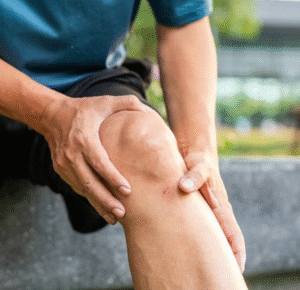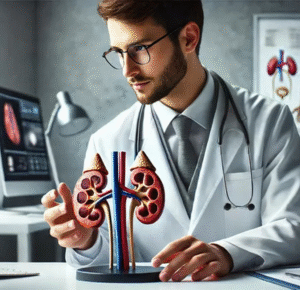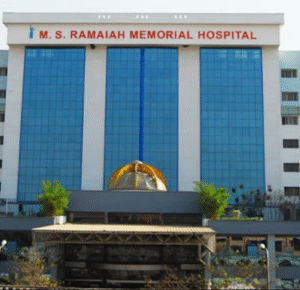
Musculoskeletal pain is one of the most common health problems that occurs in people of all age groups. This pain might be caused by bad posture, repetitive movements, and other health disorders. It also impacts your everyday life.
Medications and other treatments might relieve the pain temporarily. One of the proven methods is physical therapy for pain, which can be effective and help manage and get rid of musculoskeletal pain. It focuses on the underlying cause but also strengthens the body, boosts flexibility, and promotes long-term healing.
What Is Musculoskeletal Pain?
Musculoskeletal pain refers to discomfort that affects the muscles, bones, ligaments, tendons, or nerves. It can be acute, developing suddenly due to injury, or chronic, persisting over months or years. This pain can be localized, such as in the back or neck, or widespread, affecting multiple areas of the body.
Common symptoms include muscle stiffness, fatigue, reduced range of motion, soreness, and pain that worsens with movement. People suffering from conditions like arthritis, fibromyalgia, or back pain often experience musculoskeletal discomfort as part of their condition.
What Are The Major Causes Of Musculoskeletal Pain?
Several factors contribute to musculoskeletal pain, and identifying the cause is essential for effective treatment. The major causes include:
- Poor Posture: Sitting or standing incorrectly for long periods puts extra stress on muscles and joints, especially in the back, neck, and shoulders. Many people look for back pain treatment in Coimbatore to relieve chronic strain caused by sedentary habits and poor posture.
- Overuse or Repetitive Movements: Continuous movements, such as those at work or during sports, can strain muscles and tendons, leading to chronic pain.
- Injury or Trauma: Accidents, falls, sprains, and fractures can cause both short-term and long-term musculoskeletal pain.
- Aging: As we age, our muscles lose strength and elasticity, and our joints experience wear and tear, making pain more common.
- Underlying Health Conditions: Diseases like arthritis, osteoporosis, fibromyalgia, or infections can trigger musculoskeletal pain.
- Sedentary Lifestyle: A lack of physical activity can lead to muscle weakness, poor circulation, and stiffness, ultimately worsening pain over time.
Understanding these causes helps determine the right approach to treatment, especially through targeted exercise therapy.
What Are The Benefits Of Chronic Pain Exercises?
Exercise therapy offers a wide range of physical and psychological benefits. It is one of the most natural, sustainable, and cost-effective ways to relieve musculoskeletal pain. Some key benefits include:
1) Improved Flexibility and Mobility: Stretching and mobility exercises help loosen tight muscles, allowing joints to move more freely.
2) Increased Muscle Strength: Strengthening exercises build supportive muscles that stabilize joints, reducing the risk of future injuries.
3) Enhanced Blood Circulation: Regular exercise increases blood flow, delivering oxygen and nutrients to the affected areas, which speeds up healing.
4) Reduced Inflammation: Physical activity helps regulate inflammatory responses, which is crucial for conditions like arthritis or chronic pain.
5) Better Posture: Corrective exercises train the body to maintain proper alignment, minimizing strain on the musculoskeletal system.
6) Pain Reduction Through Endorphins: Exercise triggers the release of endorphins, natural painkillers that elevate mood and reduce discomfort.
7) Improved Mental Well-Being: Chronic pain often leads to stress, anxiety, and depression. Regular exercise combats these issues, promoting better overall wellness.
When performed consistently and under professional guidance, exercise therapy can bring long-lasting relief without the side effects of pain medications.
How Can Joint And Muscle Pain Be Treated?
Treating musculoskeletal pain involves a combination of lifestyle changes, physical therapy, and exercise-based rehabilitation. Here are some effective approaches:
- Physical Therapy: A back pain specialist in Coimbatore can design a personalized exercise program based on your condition. Techniques may include stretching, strengthening, and low-impact aerobic workouts.
- Stretching Exercises: Gentle stretches improve flexibility and reduce stiffness. For example, yoga or Pilates can be highly effective for joint and muscle pain.
- Strength Training: Exercises like resistance band workouts or light weightlifting help build supportive muscles around painful joints.
- Low-Impact Aerobics: Activities such as walking, swimming, or cycling improve endurance and circulation without straining the joints.
- Heat and Cold Therapy: Applying heat relaxes muscles, while cold packs reduce inflammation and swelling after activity.
- Ergonomic Adjustments: Making small changes in posture or workstation setup can prevent strain on the musculoskeletal system.
- Hydration and Nutrition: Staying hydrated and maintaining a balanced diet rich in calcium, magnesium, and vitamin D supports bone and muscle health.
- Mind-Body Exercises: Practices like tai chi and deep breathing help manage pain by reducing stress and improving body awareness.
Combining these treatments under professional supervision ensures the safest and most effective relief for musculoskeletal pain.
Conclusion
Exercise therapy is one of the most natural and holistic approaches to managing musculoskeletal pain. It not only reduces pain but also improves flexibility, posture, strength, and overall well-being. By addressing the root causes, like muscle imbalance, inactivity, and poor posture, exercise promotes long-term recovery without dependence on medications.
Incorporating regular physical activity, guided stretching, and strengthening exercises into your lifestyle can significantly reduce joint and muscle pain. In short, moving your body is one of the most powerful ways to heal it naturally.




